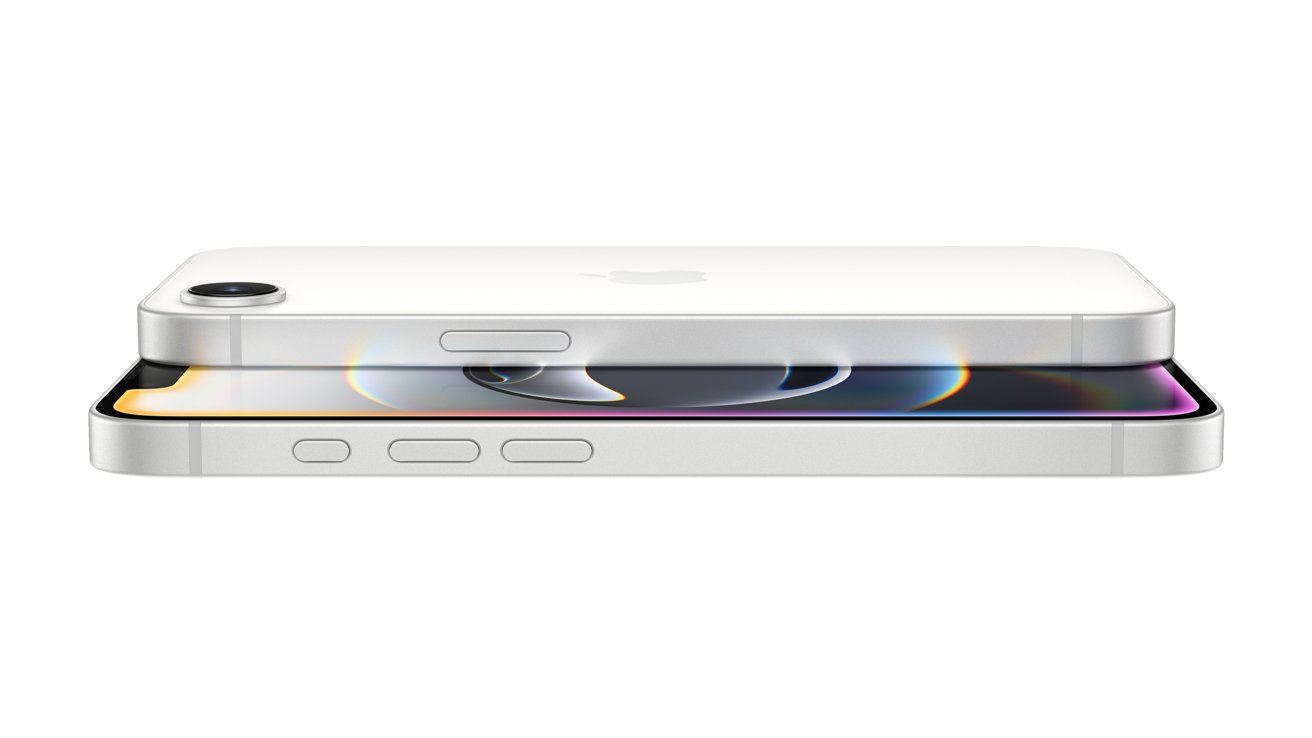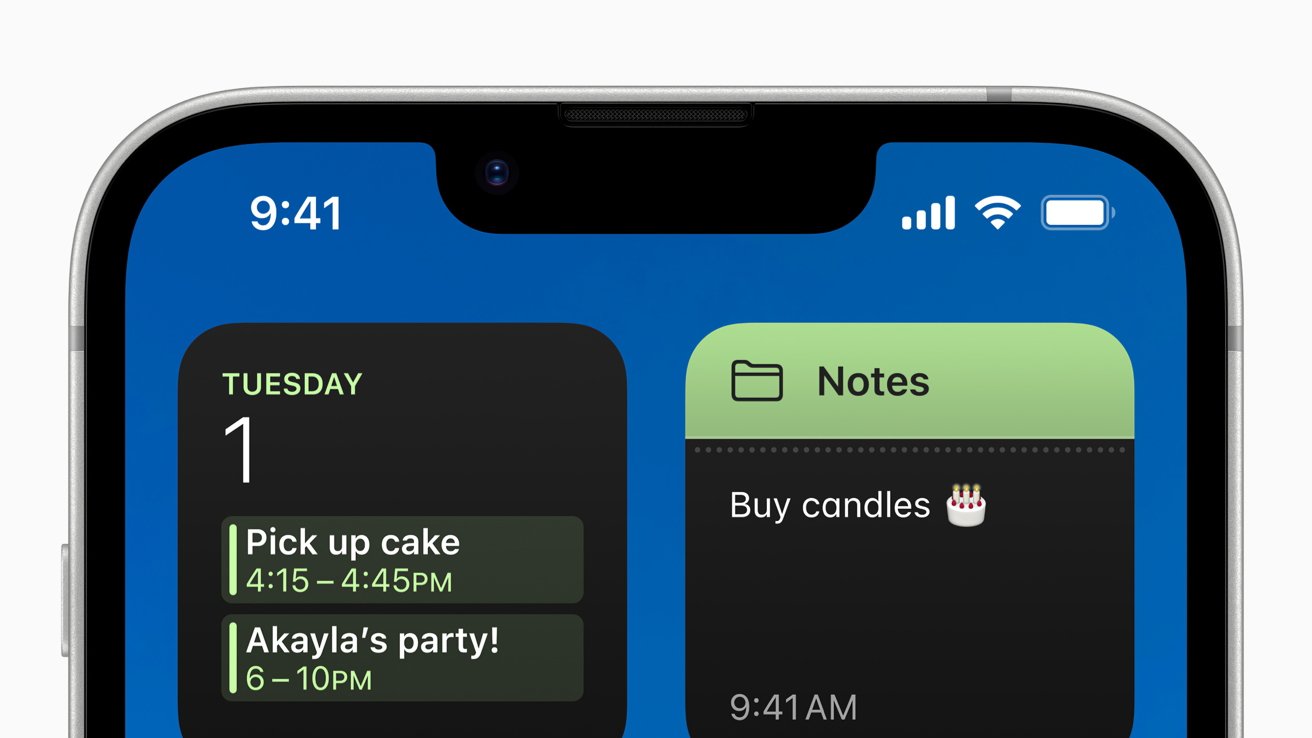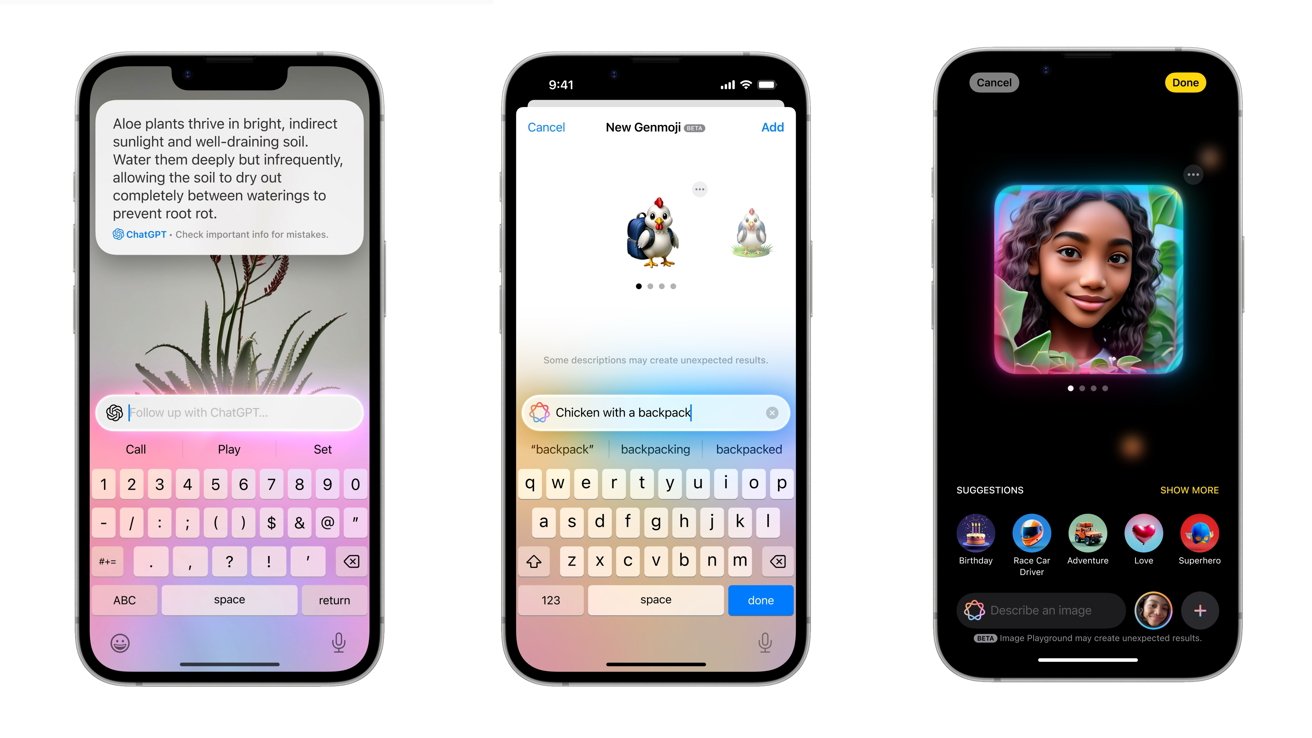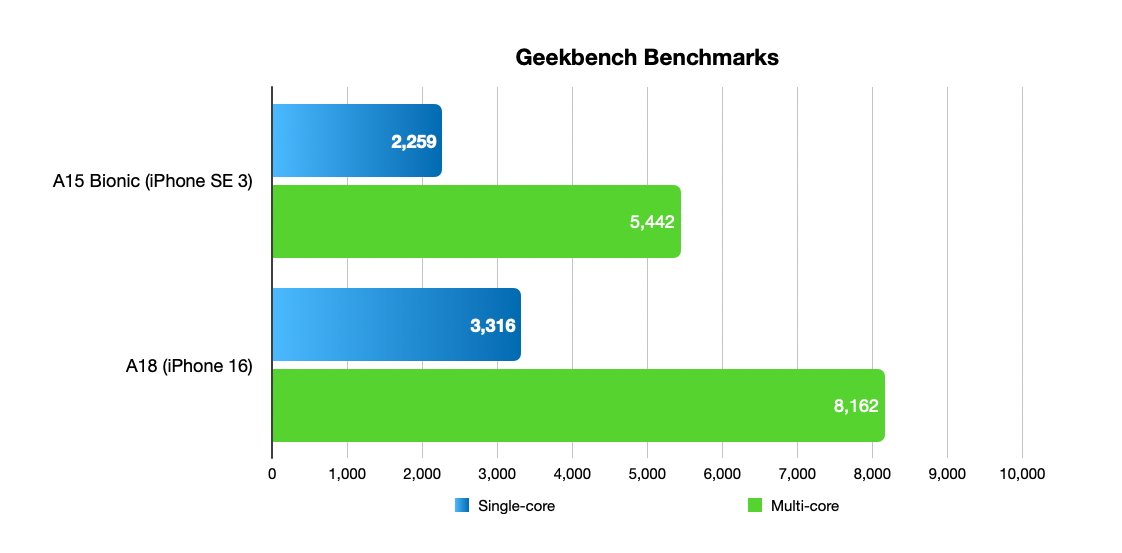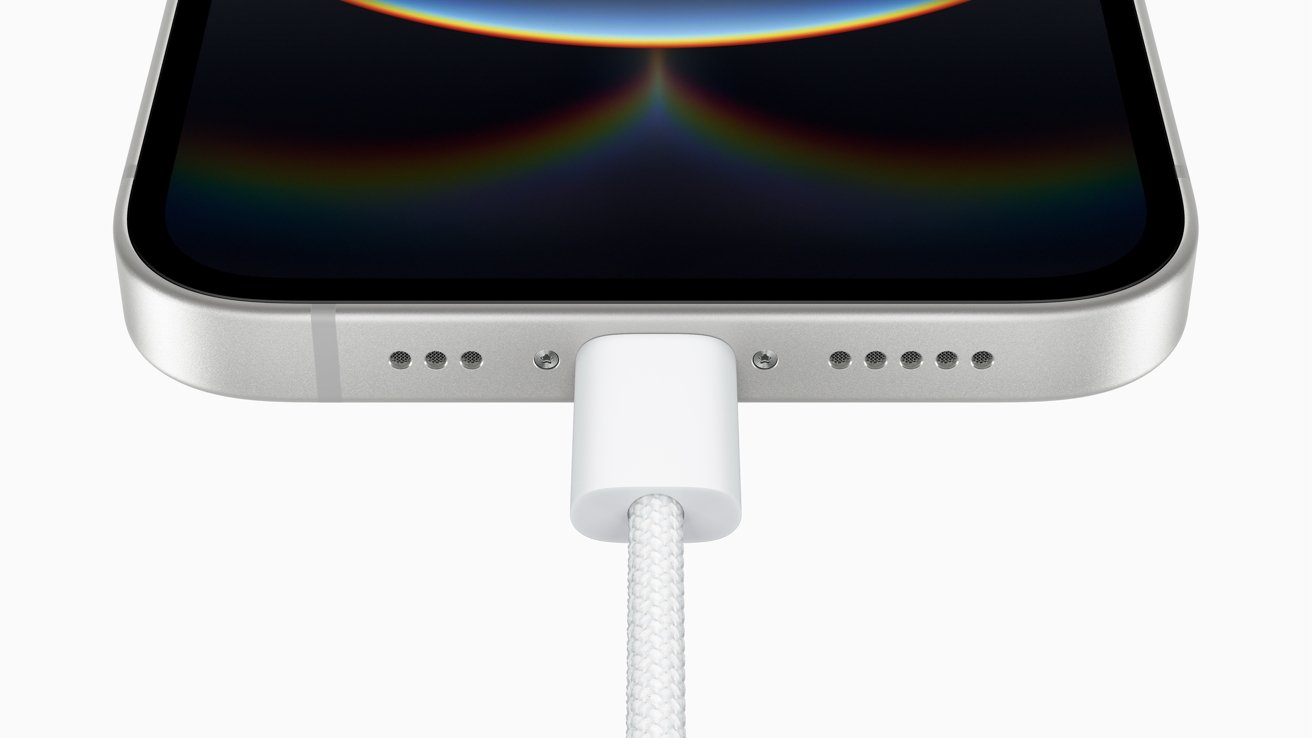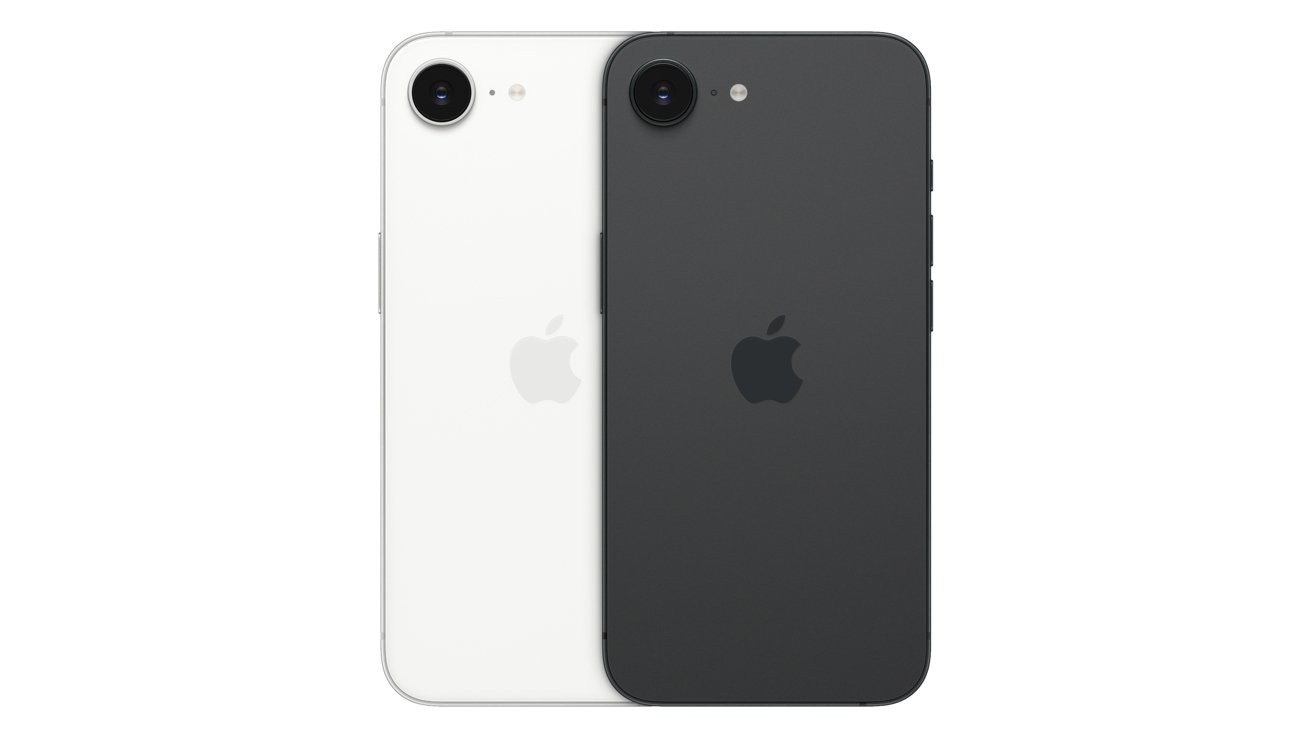The iPhone 16e brings the iPhone SE kicking and screaming to modern times. Here’s what’s new about the spiritual successor versus the outgoing budget-friendly model.
Apple has consistently kept the design of the iPhone SE behind the rest of the iPhone range throughout its life. With the introduction of the iPhone 16e as a rebranded replacement, the budget model is now a thoroughly modernized smartphone.
It’s not just the design that’s been given a boost, as its specifications have also been upgraded to match its appearance.
Here’s how much has changed between the March 2022 release of the third-gen iPhone SE, and the brand-new and renamed iPhone 16e.
iPhone 16e vs iPhone SE 3 – Specifications
| Specifications | iPhone 16e | iPhone SE (Third Generation) |
|---|---|---|
| Price (starting) | $599 Best iPhone 16e prices |
$429 Best iPhone SE 3 prices |
| Dimensions (inches) | 5.78 x 2.82 x 0.31 | 5.45 x 2.65 x 0.29 |
| Weight (ounces) | 5.88 | 5.09 |
| Side controls | Action Button | Mute switch |
| Processor | A18 4-core GPU |
A15 Bionic 4-core GPU |
| Storage | 128GB, 256GB, 512GB | 64GB, 128GB, 256GB |
| Display type | 6.1-inch Super Retina XDR | 4.7-inch Retina HD |
| Resolution | 2,532 x 1,170 at 460ppi | 1,334 x 750 at 326dpi |
| True Tone | Yes | Yes |
| Biometrics | Face ID | Touch ID |
| Connectivity | 5G (Sub-6GHz only), Gigabit-class LTE, Wi-Fi 6, Bluetooth 5.3, NFC Emergency SOS via Satellite, Roadside Assistance via Satellite, USB-C (USB 2) |
5G (sub-6GHz), LTE Advanced, Wi-Fi 6 Bluetooth 5.0, NFC, Emergency SOS, Lightning |
| Rear Cameras | 48MP Fusion | 12MP Main |
| Video | 4K 60fps, 4K 60fps HDR with Dolby Vision, 1080p 240fps Slo-Mo, Optical image stabilization, |
4K 60fps, 1080p 240fps Slo-Mo, Optical image stabilization, |
| Front Camera | 12MP TrueDepth, Autofocus |
7MP FaceTime HD, Autofocus |
| Battery Size (Video playback time) | Up to 26 hours | Up to 15 hours |
| Wireless Charging | Qi 7.5W | Qi 7.5W |
| Colors | Black, White |
Midnight, Starlight, (Product)RED |
iPhone 16e vs iPhone SE 3 – Physical Dimensions
The previous third-generation model is relatively small when it comes to iPhone sizing. At 5.45 inches long and 2.65 inches wide, it’s not the biggest in the range.
However, at 0.29 inches, it was even thinner than the flagship models, like the iPhone 16. At 5.09 ounces, it’s also very light for an iPhone.
The iPhone 16e, however, is a much bigger animal. At 5.78 by 2.82, it has a longer and wider body than the iPhone SE, but it’s a tad thicker at 0.31 inches.
This puts the iPhone 16e very close to the same size as Apple’s current flagship model, the iPhone 16.
With size comes weight, and the iPhone 16e is a bit heavier at 5.88 ounces.
Construction-wise, the iPhone SE 3 used Apple’s usual motif of a glass sandwich, with an aluminum frame in the middle. However, rather than the flat-sided appearance of the modern iPhone, it borrowed the design language and curved sides of the iPhone 8.
The iPhone 16e is more like the iPhone 14 in design, with an aluminum and glass sandwich still in use. Aside from the size and the screen, the new model also adopts the more modern use of flat sides instead of curved ones.
For physical interactions, the iPhone SE includes the side button, the volume controls, and the ring/silent switch, a now-defunct component based on the rest of the iPhone collection’s use of the Action button. The screen also has the Home button, which is used for Touch ID.
The iPhone 16e certainly gets on board with the Action button, while retaining the volume controls and the side button. The Home button is gone on the new model, enabling for an edge-to-edge display to be used.
Another big indicator of its age is the iPhone SE’s use of Lightning. With Apple shifting over to USB-C across its entire catalog, this made the iPhone SE 3 a considerable outlier by using the connection type.
Thanks to the iPhone 16e’s use of USB-C, Lightning’s gone, but speed continues to be an issue. The USB-C connector operates at USB 2 speeds, so transfers of videos to a Mac will still be painfully glacial.
iPhone 16e vs iPhone SE 3 – Display
Another big indicator that change has occurred is the display. The iPhone SE 3 was the last smartphone in Apple’s catalog to cling onto using the Home button on the front. This design choice had consequences, including eating into the available front space that a display could occupy.
With the base and top blocked off, that left Apple using a 4.7-inch Retina HD display. That’s an LCD IPS screen with a relatively low resolution of 1,334 by 750, and a pixel density of 326 pixels per inch.
After eliminating the Home button, the iPhone 16e can now stretch out with a 6.1-inch Super Retina XDR screen. That means it’s shifted from LCD to OLED, matching the rest of the iPhone lineup.
There’s a resolution bump too to 2,532 by 1,170. That gives it a much higher pixel density of 460ppi, rivaling the other flagship models.
It’s not an entirely unfettered screen, though, as Apple has brought back the dreaded notch to the iPhone 16e. This element, which contains the TrueDepth camera array, takes up space at the top of the screen.
Given the massive resolution increase, it’s probably a justifiable sacrifice in the new model. It could’ve been improved by the use of the Dynamic Island, but Apple decided not to use it this time around.
The display specifications of the third-gen SE are also disappointing when you look at things like brightness, with it only able to kick out 625 nits at most. The 1,400:1 contrast ratio is also bad compared to the rest of the range, but that’s chiefly because of its use of LCD instead of OLED.
The iPhone 16e goes up to a maximum brightness for typical content usage at 800 nits. At a push, it has a peak brightness for HDR content of 1,200 nits.
The OLED usage also gives it a considerably higher contrast ratio, at 2 million to one.
Other mainstays of display features, such as True Tone support, Wide color (P3) support, and an oleophobic coating, are present on both smartphones, as usual.
iPhone 16e vs iPhone SE 3 – Cameras
The iPhone SE has always offered only one camera to consumers. This was more an essential and basic feature that Apple had to add, without going too far and raising the cost of the device.
In the third-gen model, this was a 12MP camera sensor, with an f/1.8 aperture, a 5x digital zoom, and the ability to record 4K video at 60fps. You had some niceties, including optical image stabilization, computational photography using Deep Fusion, and a 240fps 1080p Slo-mo video mode, but it wasn’t exactly a photographic tour-de-force.
The iPhone 16e continues the trend, by providing only one rear camera. This time around, it’s 48MP Fusion camera with an f.1.6 aperture. There’s still computational photography elements like Deep Fusion and the new Photonic Engine, as well as optical image stabilization, but there’s also a new Night mode.
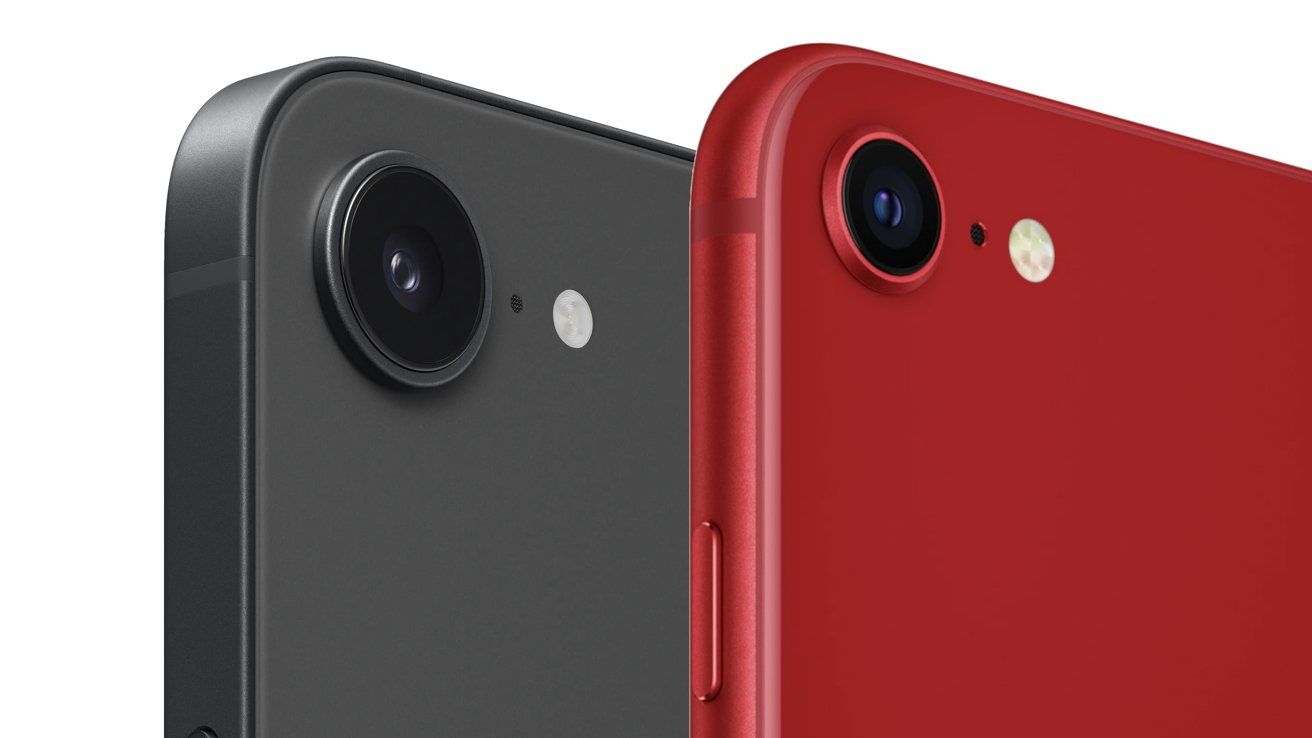
iPhone 16e vs iPhone SE 3: iPhone 16e [left] still has one camera, just like the iPhone SE 3 [right]
More importantly for the camera, the high resolution allows Apple to pull off a trick to create a second virtual Telephoto camera. By selectively cropping the massive sensor resolution down to 12MP, it effectively creates an image with a 2x optical zoom.
On the video side, there’s not a massive amount new for the iPhone 16e over the third-gen SE. There are upgrades, though, including 4K video at 60fps supporting Dolby Vision, Audio Zoom, wind noise reduction, Audio Mix, and Spatial Audio recording.
The front camera wasn’t much to shout about on the iPhone SE 3, with it being a 7MP snapper with an f/2.2 aperture and 1080p video recording. It too had Deep Fusion and Portrait Mode with Depth Control and Portrait Lighting.
However, it was strictly just a camera, with no depth-sensing capabilities, and not much special about it.
With the switch to Face ID and the TrueDepth camera array, the iPHone 16e gains a lot at the front. This includes an upgraded resolution to 12MP, an f/1.9 aperture, and Animoji and Memoji support.
The front also manages to use the Photonic Engine, can record 4K 60fps Dolby Vision video, and has a 120fps 1080p Slo-mo mode.
If the screen was the most important change between generations, the camera comes in a close second.
iPhone 16e vs iPhone SE 3 – Processing and Performance
While the iPhone SE 3 had decidedly dated design aesthetics, it did however provide a lot of performance. With each iteration, Apple is keen to put a decent chip in due to the multi-year gaps between releases.
Inside the iPhone SE 3 was the A15 Bionic chip, a six-core CPU with two performance cores and four efficiency cores. It’s the same chip that you’d find inside the iPhone 14 and iPhone 14 Plus.
That CPU was accompanied by a four-core GPU and a 16-core Neural Engine. While it was capable of 15.8 trillion operations per second, that wasn’t enough to be able to use Apple Intelligence.
For the iPhone 16e, Apple has decided to use the A18, the current-generation chip. However, while it has the same 6-core CPU as the iPhone 16’s version, as well as the 16-core Neural Engine, it instead reduces the GPU core count down to four.
Obviously, this chip means it will work with Apple Intelligence, Apple’s move towards generative AI and other AI-based assistance. You’re not going to be able to play around with Image Playground or use the intelligent Writing Tools, nor enjoy ChatGPT working with Siri on the older smartphone.
As for performance, we don’t exactly know how much power this slightly neutered version of the A18 will provide, but we can still check out the relative ballpark of improvement you can expect.
Geekbench’s listings for the iPhone SE 3 gives it a single-core score of 2,259. The A18 in the iPhone 16 manages 3,316, a 47% improvement.
On the multi-core test, the iPhone SE’s 5,442 is dwarfed by the A18’s 8,162, a 49% gain.
Given the specifications of the version of the chip inside the iPhone 16e, its single-core and multi-core performance should be pretty close to the A18, because Apple hasn’t published about any changes affecting those tests. However, other factors such as changes in thermal management or Apple adjusting the clock speed for the model will have some effect on performance.
The Metal score of 17,695 on the iPhone SE is soundly beaten by the 56% higher 27,665 of the A18. That’s to be expected from three generations of improvements.
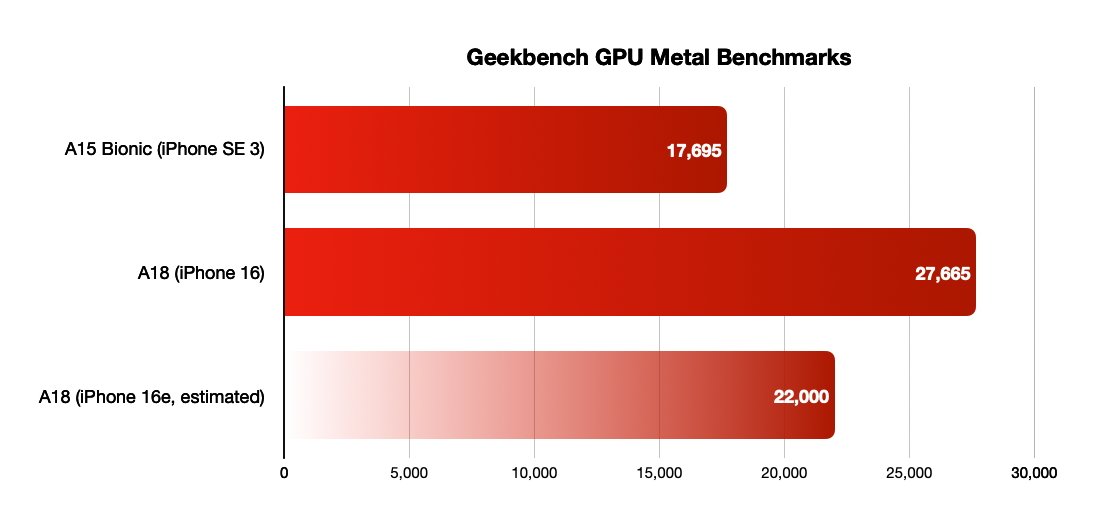
iPhone 16e vs iPhone SE 3: A15 and A18 Geekbench results, as well as an estimate for the iPhone 16e’s A18 chip.
Since we know that the A18 in the iPhone 16e has one fewer core than the iPhone 16’s version, we could estimate the Metal score could be a fifth lower, around 22,000.
This is still a fair bit of a boost, albeit a somewhat smaller 25% difference, but it’s still an improvement.
Again, this is only a simple estimate based on core counts. If Apple made other changes to the chip, or other alterations to the setup in general, it could end up being a quite different figure.
iPhone 16e vs iPhone SE 3 – Connectivity
For wireless connectivity, the third-gen SE model could connect to 5G networks, but only using the sub-6GHz band. There was no mmWave high-speed connectivity offered in the budget-focused model.
It did have 4G LTE Advanced as a backup, as well as 3G and 2G network support.
It’s a similar story for the iPhone 16e, with mmWave absent but sub-6GHz 5G present and usable, as well as Gigabit LTE this time around.
More importantly, it’s using Apple’s C1 modem for the first time, marking another shift in iPhone technology and bringing more of the component designs in-house.
Wi-Fi on the third-gen iPhone SE was Wi-Fi 6 support with 2×2 MIMO, while Bluetooth was version 5.0. While Wi-Fi is the same on the iPhone 16e, the Bluetooth has been upgraded to 5.3.
NFC is still around, enabling Apple Pay transactions to go through.
For location services, the iPhone SE Gen 3 could use GPS, GLONASS, Galileo, QZSS, and BeiDou, and it was also equipped with a digital compass and iBeacon support. The iPhone 16e tweaks this slightly, with the addition of NavIC.
Physical connectivity was offered by Lightning on the third-gen model, a largely depreciated connection going by the rest of Apple’s product catalog. That’s now USB-C in the iPhone 16e.
iPhone 16e vs iPhone SE 3 – Power and Battery
When it comes to battery life, the iPhone SE 3 didn’t exactly knock things out of the park. It could handle up to 15 hours of locally stored video playback, ten hours if streamed, and up to 50 hours of audio playback from a single charge.
A few years later, the iPhone 16e offers consumers a lot more usage time. It’s now up to 26 hours for locally stored video, 21 hours of streaming, and up to 90 hours of audio playback.
Fast charging was available on the iPhone SE 3, with a 50% charge achievable in 30 minutes using a 20W adapter. The iPhone 16e offers the same thing.
For wireless charging, the iPhone SE 3 did support Qi chargers, but not MagSafe. Again, this is unchanged in the iPhone 16e, with the lack of MagSafe somewhat puzzling.
iPhone 16e vs iPhone SE 3 – Other Features
The iPhone SE 3 has a splash, water, and dust resistance rating of IP67, meaning it can survive to a depth of 1 meter for 30 minutes. The iPhone 16e has IP68, which extends the depth to 6 meters for up to 30 minutes.
The biometric security of the iPhone SE 3 was Touch ID, using a fingerprint reader embedded into the Home button on the front of the smartphone. This has been removed and replaced by Face ID in the iPhone 16e.
The iPhone SE 3 had dual-SIM support, consisting of a nano SIM card and an eSIM. It could also use two eSIM cards in dual-SIM mode too.
Dual-SIM support is also available in the iPhone 16e. However, in the United States, it’s only using eSIMs, no physical SIM cards, though nano SIM cards are still usable in other territories.
iPhone 16e vs iPhone SE 3 – Capacity, Color, and Pricing
The iPhone SE 3 was available in three color options: Starlight, Midnight, or (Product)RED.
It was also sold in three capacities, with 64GB priced at $429, 128GB at $479, and 256GB for $579.
The iPhone 16e is sold in two colors: Black or White.
Its capacities are bumped up versus the iPhone SE, starting at 128GB for $599, with 256GB at $699, and 512GB for $899.
iPhone 16e vs iPhone SE 3 – Massive differences
While it does not share the same name as the iPhone SE line, the iPhone 16e is basically the nearest thing consumers can buy from Apple. It’s the new entry-level point to getting an iPhone, without acquiring a previous-generation model.
Against the iPhone SE 3, the iPhone 16e presents a considerable amount of progress, in both design and in specification. Over three years, Apple has come up with a design that increases the screen resolution and size, finally dispenses with the Home button, boosts the camera resolution, and increases processing performance.
That last one is especially important, since the iPhone 16e now serves as the low-budget entryway into using Apple Intelligence. It’s something that almost certainly won’t be appearing on the iPhone SE 3 at all.
What Apple has come up with is a replacement for the iPhone SE line that offers most of what you would expect from a modern flagship device, but taken down a peg or two to save money.
Existing iPhone SE 3 owners will be hard-pressed to see anything wrong in the iPhone 16e itself, but the $170 increase to the starting price could be a concern for those watching their wallet.
Where to buy Apple’s iPhone 16e and SE 3
Wireless carrier AT&T is clearing out remaining iPhone SE 3 inventory ahead of 16e preorders going live, with prices as low as $1.99 per month for the device. You can also browse today’s best iPhone deals across the entire range. We’ll be bringing you the best iPhone 16e offers once preorders begin.


